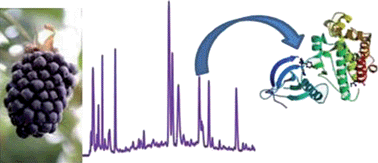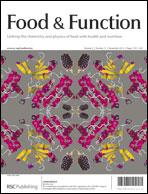The combination of analytical-scale HPLC separation with a TR-FRET assay to investigate JAK2 inhibitory compounds in a Boysenberry drink
Abstract
We report the detection of JAK2 inhibitory activity in a Boysenberry (Rubus loganbaccus x R. baileyanus Britt.) drink using a combination of analytical-scale


 Please wait while we load your content...
Please wait while we load your content...